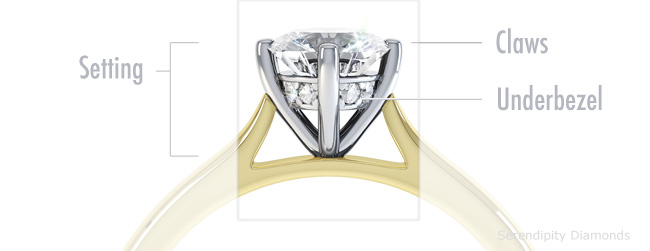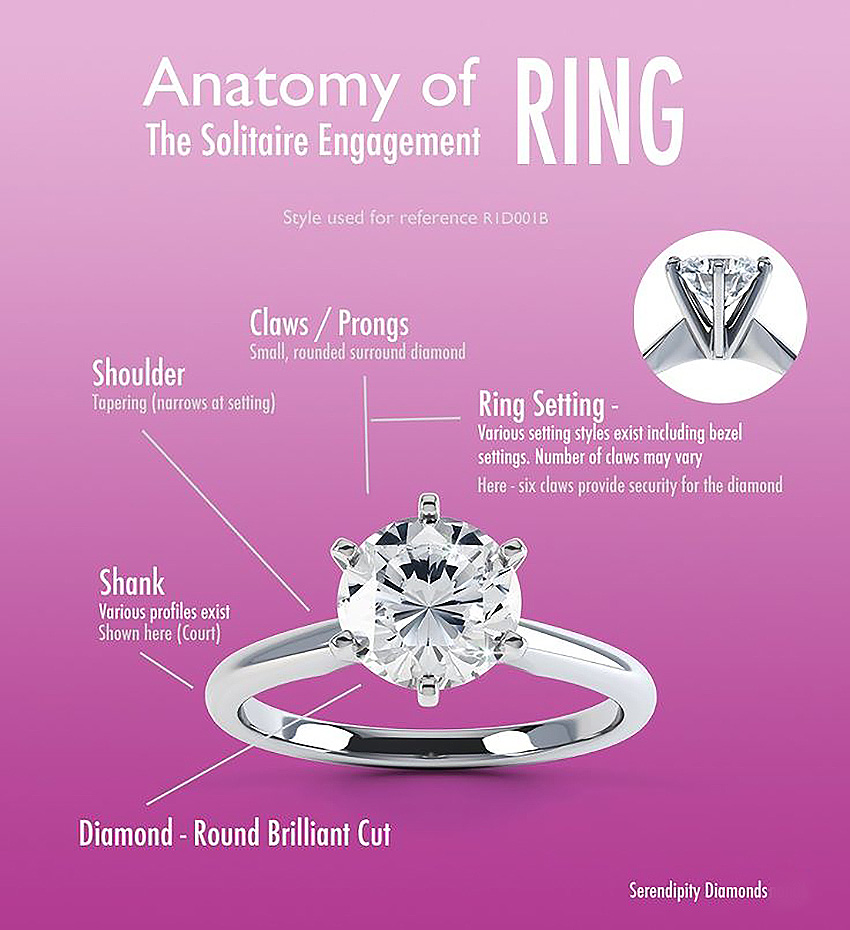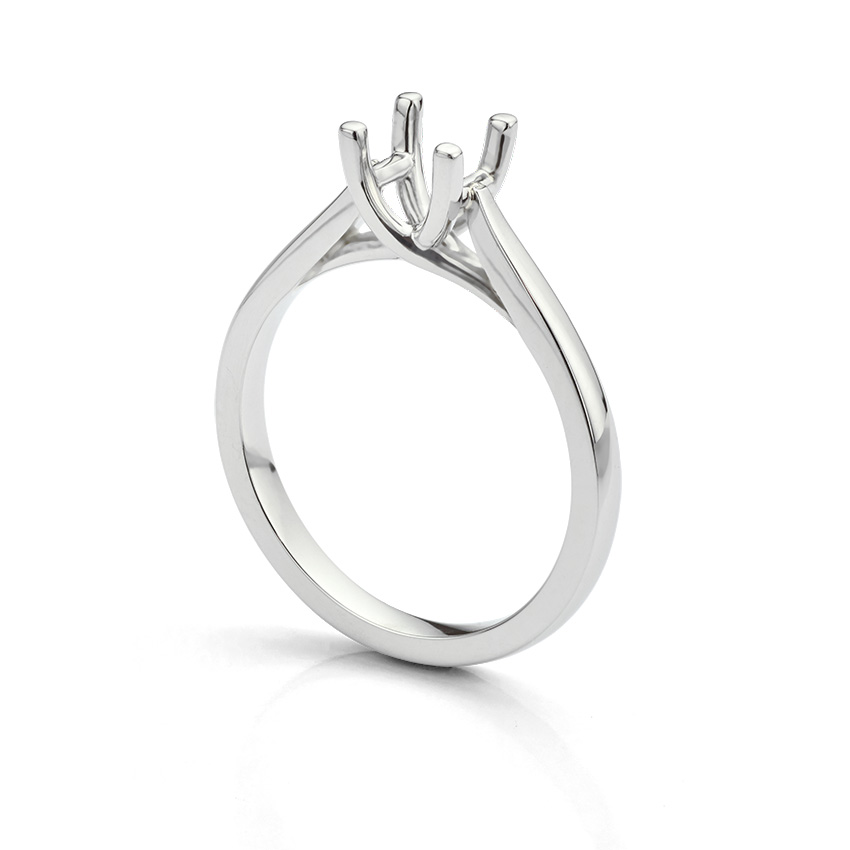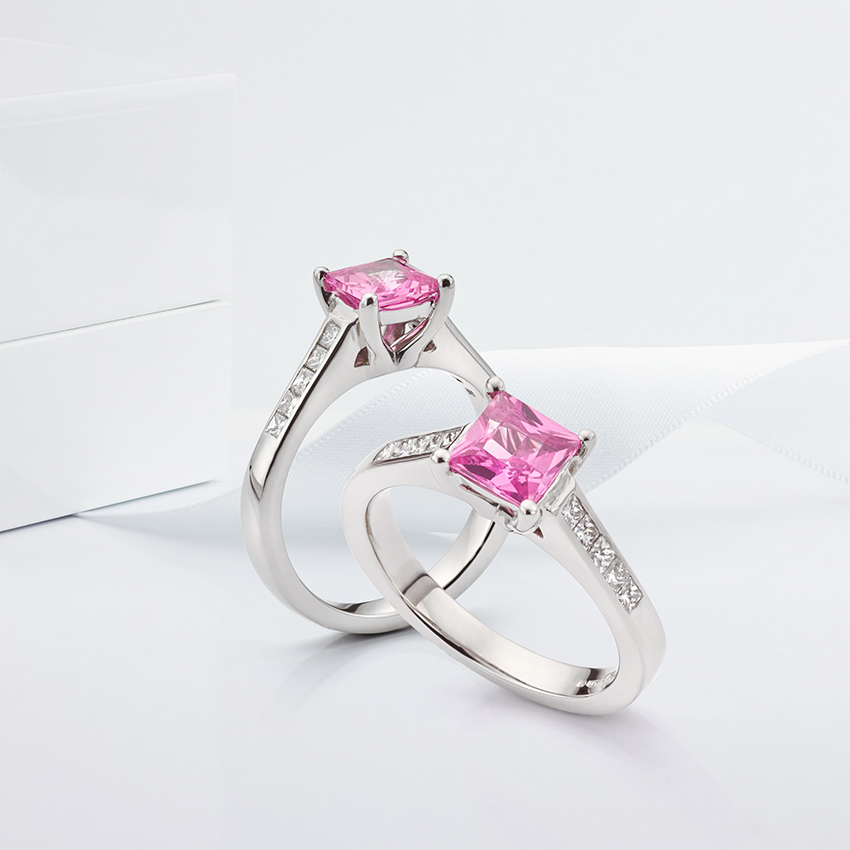What are the parts of an engagement ring?
As jewellers, we often use terms that buyers struggle to understand. For this reason, we decided to offer a little help on the parts of an engagement ring.
Despite all of the different ring styles available, most diamond rings have the same parts. Helpful jewellers assist buyers by explaining the differences. At the same time, most jewellers show examples from their own showroom to explain in more detail.
Parts of an engagement ring – basic anatomy of a solitaire ring
Keeping things simple, there are three main parts to an engagement ring: The shank, shoulders and setting.
Engagement Ring Settings

The setting of a diamond engagement ring holds the diamond, or diamonds in place. When it comes to a diamond ring, most of the cost goes into the diamond. This is especially true when it comes to solitaire engagement rings over half a carat in weight.
Some buyers source their own diamond or gemstone, opting to buy only a mount or setting from a jeweller.
Engagement ring settings vary greatly in style. The most popular, classic designs take inspiration from the designs of Tiffany engagement rings. World-famous jeweller Tiffany & Co. created the iconic Tiffany setting which remains popular today.
Types of Engagement Ring Settings
Jewellers create ring settings to hold diamonds or coloured gemstones. Different setting styles create differing looks. As a result, designs accommodate alternative tastes. Furthermore, some are more practical than others. Here are just a few of the different setting styles available.
Claw Settings
Claw settings hold gemstones within raised prongs. A setter cuts a small nick into the inner surface of each claw. The diamond rests on this ‘shelf’ – held in by the tension of the claws. We create 3 claw settings, 4 claw settings and 6 claw settings. In fact, some are straight, whilst other settings feature a distinctive swirl or twist. Prongs are often rounded. At other times, setters shape the claws into a point, similar to the talon of a bird.

Adeline 4 claw engagement ring
Tension Settings
Tension settings make a popular choice for a minimal setting style. Their popularity arises from their uncluttered and simple appearance. This type of setting holds the diamond under great tension within the setting. For example, the Unity engagement ring features minimal tension setting with a brilliant-cut diamond.

Tension set engagement ring Unity design
Bezel settings
Bezel settings feature in two styles. Full bezel settings and part-bezel settings. Both surround the diamond with an edge of metal. Furthermore, this edge of metal follows the outline of the diamond or gemstone.
The rosebud engagement ring featuring a bezel setting
Engagement Ring Shoulders

The shoulders of an engagement ring join the shank to the setting. In fact, shoulders flow seamlessly from the shank to the setting. Most vary in shape by comparison to the band. To explain, here are some classic shoulder styles.
Tapered ring shoulders
Tapered shoulders feature a gradual narrowing of band width. In fact, tapering shoulders help to maximise the appearance of the setting. For example, a small diamond appears larger next to narrow shoulders.

Parallel ring shoulders
Parallel or straight shoulders give a modern look to an engagement ring. They appear identical to the style and width of the entire band.
Bespoke Aquamarine ring with straight shoulders
Split or forked ring shoulders
Split or forked shoulders divide below the ring setting. Comparable to a snake’s tongue, they fork and join to the setting as if held within thumb and finger.

Diamond shoulders
Engagement rings with diamond shoulders make a popular choice. Interestingly, some rings include diamonds and gemstones set into each side of the band.
Pink Fliss engagement ring set with a pink Sapphire and diamond shoulders
Interwoven shoulders
Interwoven shoulders add beauty to any ring design. Plain, or diamond set, two strands overlap in a roped or plaited effect. Many of our rings come from or bespoke design service. An example appears in our video below.
Interwoven diamond shoulder ring, created through our bespoke design service.
Tapering diamond shoulders often include graduated sizes of diamonds. As a result, each diamond matches the width of the ring as it narrows towards the setting.
The Engagement Ring Shank or Band

The band or shank of an engagement ring wraps around the engagement ring finger. In fact, most shanks have a specific cross-section. We call this the profile of the ring. Ring profiles include the following shapes.
Ring shanks vary in width. For example, most of our engagement rings measure 2.5mm in width.
Court. Sometimes called comfort-fit. Curved on the outer and inner surface.
D-shaped. Curved on the outer surface, flat inside.
Flat. Flat on the inside and outside surface.
In addition, the thickness, or depth of the band may vary. Most engagement rings feature 1.5mm deep bands. Thinner bands weaken with wear. Furthermore, they are less tolerant to resize work. As a result, they may snap, crack or bend out of shape after the ring has been resized. Moreover, narrow, shallow bands rarely last a lifetime.
About Mark Johnson
My name is Mark and I'm founder at Serendipity Diamonds. I have 30 years or experience in polished diamonds and jewellery. Today, I work with an expert team in our Isle of Wight jewellery showroom located in Ryde. Most of my work involves helping clients in our showroom, working on our two websites and photographing jewellery commissions.








